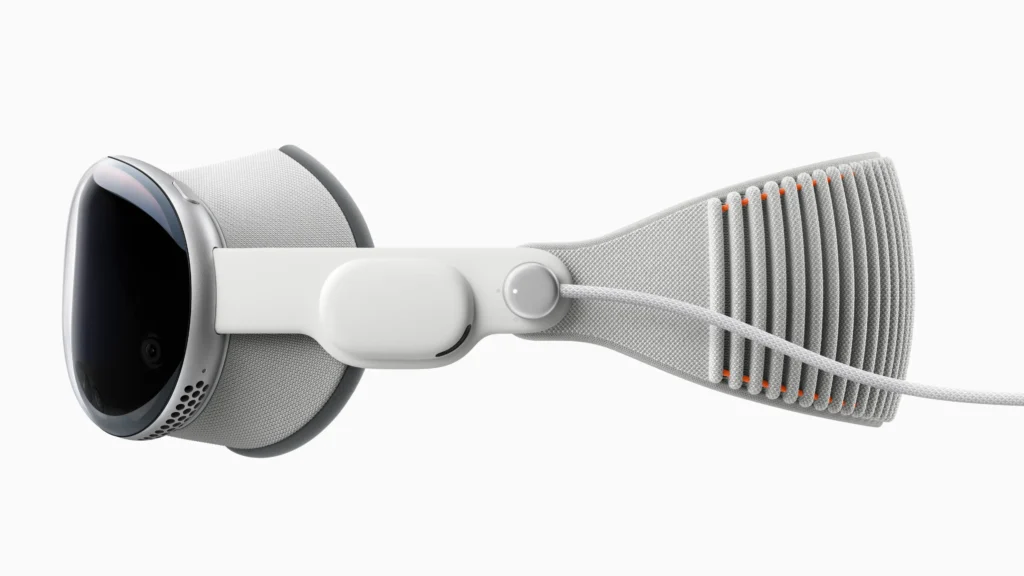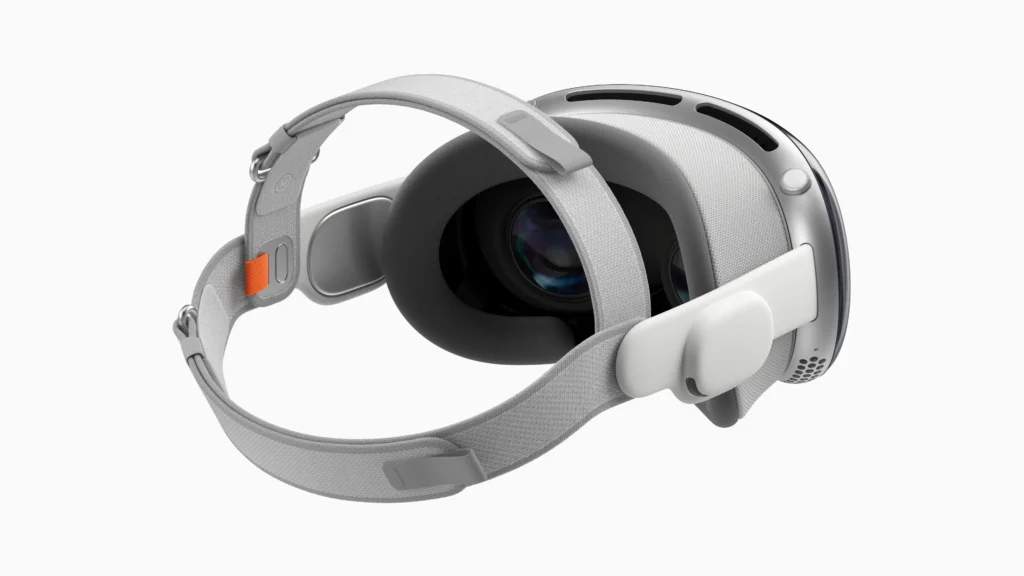Apple’s Vision Pro marks a monumental leap into the future of spatial computing, blending augmented reality (AR) and virtual reality (VR) into a seamless, groundbreaking experience. After years of anticipation, Apple’s foray into the mixed reality space has not only captured the attention of tech enthusiasts but has also begun reshaping how industries imagine the intersection of digital and physical worlds.
In this extended deep dive, we’ll explore what makes the Apple Vision Pro a true innovation, the technologies that set it apart, the immersive breakthroughs it delivers, and how Apple once again pushes the boundaries of an emerging niche. We’ll also examine the Vision Pro’s real-world uses, its integration into the Apple ecosystem, and — because no product is without flaws — its current shortcomings and challenges.
A New Era: Introducing Apple Vision Pro
According to Apple, the Vision Pro isn’t just another headset; it’s an entirely new category called spatial computing. Unlike traditional VR or AR headsets, Vision Pro merges the real and digital seamlessly, allowing users to navigate apps, interact with 3D objects, and collaborate with others in ways previously only imagined in science fiction.
The hardware design itself is a feat: a sleek, glass-and-aluminum construction housing micro-OLED displays with a combined resolution of 23 million pixels, custom catadioptric lenses, and an advanced sensor array including LiDAR, cameras, and eye tracking. The fit and finish are unmistakably Apple — minimal, luxurious, and thoughtfully engineered.
Innovation at Its Core: Hardware Breakthroughs
At the heart of the Vision Pro lies Apple’s custom-designed R1 chip, working alongside the M2 chip to process massive amounts of sensor data in real time. The R1 chip is purpose-built to eliminate latency, ensuring that visual and interactive elements respond instantly — a critical factor for avoiding motion sickness and maintaining immersion.
The Wired recently mentioned how Vision Pro’s display technology outshines competitors with incredible sharpness, dynamic range, and color accuracy. Users report reading text comfortably in virtual environments, a task that has historically challenged many VR devices. Spatial audio, delivered through dual-driver audio pods, completes the immersion by tailoring sound to the user’s environment and head position.

The Software Edge: VisionOS and Apple Intelligence
Running on VisionOS, Apple’s newest operating system, Vision Pro introduces a spatial interface where apps float in your space, and interactions happen through eye tracking, hand gestures, and voice commands. According to CNET, this natural input system feels intuitive, making it possible to manipulate windows, zoom into documents, or even create 3D objects just by looking and gesturing.
Apple Intelligence plays a pivotal role here, infusing the Vision Pro experience with AI-enhanced features like real-time transcription, contextual search, adaptive interfaces, and predictive suggestions. The seamless integration with services like FaceTime — enabling realistic avatars called Personas — redefines virtual meetings, allowing for face-to-face collaboration even when miles apart.
Immersive Applications: Redefining Work, Creativity, and Entertainment
The Apple Vision Pro isn’t just about novelty — it’s designed to transform how we work, create, and consume content.
- Productivity: Imagine multiple virtual screens floating in your workspace, with crisp text and responsive multitasking. For knowledge workers, designers, and developers, Vision Pro extends the digital canvas, allowing complex workflows without the physical constraints of a monitor.
- Creativity: With spatial tools, artists and creators can sculpt, paint, and design in 3D space. Vision Pro opens up new possibilities in architecture, 3D modeling, video editing, and game design.
- Entertainment: Movies, TV shows, and sports are elevated through immersive environments, including virtual theaters and panoramic views. Spatial audio makes every scene feel alive, placing you inside the action.
- Communication: FaceTime Personas and spatial conferencing tools offer next-level remote collaboration, with realistic facial expressions and eye contact that improve emotional connection.
Integrating Into the Apple Ecosystem
Vision Pro doesn’t live in isolation — it works in harmony with the broader Apple ecosystem. Users can mirror their Mac display into their virtual space, interact with iPhone and iPad apps, and access familiar services like Apple TV+, Apple Music, and iCloud.
This tight integration ensures a smooth transition for users already embedded in Apple’s ecosystem, the seamless syncing of files, media, and even Apple Intelligence recommendations across devices, positions Vision Pro as not just a standalone headset but a natural extension of your digital life.
Early Reception: Real-World Impressions
Initial hands-on reviews from CNET and others describe the Vision Pro as a mind-blowing experience — but also acknowledge that it’s not yet a device for everyone. Early adopters praise the stunning visuals, fluid interactions, and next-level immersion, but note that long-term wear can be fatiguing, and the app ecosystem is still maturing.
Developers are beginning to create Vision Pro-optimized experiences, and Apple’s upcoming updates are expected to address some early gaps, particularly around third-party integrations and niche professional tools.

Vision Pro’s Pros and Cons: A Balanced Look
Pros
- Groundbreaking hardware and sensor design
- Stunning visual fidelity and spatial audio
- Natural eye, hand, and voice input system
- Deep Apple ecosystem integration
- Transformative potential for productivity, creativity, and entertainment
- Apple Intelligence-driven features that personalize and elevate the experience
Cons
- High price point limits mainstream adoption
- Limited app ecosystem at launch
- Fatigue from extended wear
- Some features feel experimental or unfinished
Weighing the Vision Pro’s Value
The Apple Vision Pro is undeniably a first-generation product — but it’s one that sets the bar high. For early adopters, professionals, and creatives eager to explore new frontiers, it offers unmatched innovation and opens doors to new workflows and experiences. For the broader market, its high cost and developing ecosystem may signal that the true revolution is still a few years away.
What’s clear is that Vision Pro represents Apple’s boldest step into the future of computing. It’s not just a headset; it’s a platform designed to redefine how we interact with technology itself.
The Road Ahead: Shaping the Future of Spatial Computing
As Vision Pro expands into more countries — as announced by Apple — and developers unleash their creativity, we can expect an explosion of new applications, services, and innovations built for the platform. From education and healthcare to enterprise and entertainment, the possibilities are vast.
Have you experienced the Apple Vision Pro or are you curious about its potential? Share your thoughts, experiences, or questions in the comments.




